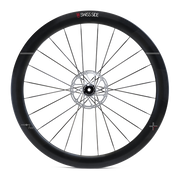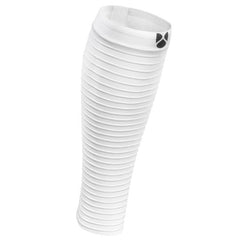The world of cycling is continually evolving, and one of the hottest topics today is the trend toward wider rims and tires. With increasing inner rim widths becoming the standard, riders and industry experts alike are asking important questions about aerodynamics, drag, and performance. Here, we’ll dive into the key aspects of this discussion.
Why Wider Rims and Tires?
Increased inner rim widths allow for a better tire profile, offering improved comfort, grip, and control - especially at lower tire pressures. This makes them particularly attractive for endurance and gravel riders. But with these advantages come trade-offs, particularly in aerodynamics.
Aerodynamics: The Key Debate
Swiss Side, in partnership with DT Swiss, has extensively researched the aerodynamic implications of wider rims. Here’s what you need to know:
Frontal Area is Critical
The frontal area (or "Stirnfläche" in German) is a major contributor to drag. Wider rims inherently increase this frontal area, leading to a higher base drag. While the shape of the rim can be optimised to minimise drag, the starting point of a wider rim always begins with more resistance compared to narrower rims.
The Role of the Tire-Rim Interface
Wider rims can improve the interface between the tire and rim, reducing the "light-bulb" effect - where the tire bulges over the rim. This straighter sidewall can create a slight improvement in the sailing effect (how airflow clings to the rim), particularly at higher yaw angles (crosswinds). However, these high yaw angles occur less frequently during real-world riding, meaning the benefits are limited.
Optimised Rim Widths
Swiss Side emphasizes finding the balance between base drag and sailing effect. Their research shows that:
For 25 – 28mm tires, inner rim widths of 20 – 22mm are optimal.
For 30 – 32mm tires, inner rim widths of 24mm provide the best results.
Weight and Safety Considerations
Wider rims tend to weigh more, which can affect overall bike performance. While some manufacturers reduce weight by adopting hookless rim designs, Swiss Side prioritises safety and does not compromise on this aspect. A rim that’s too light or lacks hooks can pose risks, particularly for road cyclists who frequently use high pressures.
Do Wider Rims Always Mean Better Aerodynamics?
Some brands claim that wider rims improve aerodynamics. Swiss Side’s findings, however, suggest otherwise:
While wider rims can delay airflow separation, the added base drag often outweighs these benefits.
Narrower rims generally deliver better overall aerodynamic performance, particularly in typical real-world conditions where low yaw angles dominate.
The Bottom LineThe choice of rim and tire width should be driven by your specific needs and riding style. Wider rims and tires offer tangible benefits in comfort, grip, and control, but they come with compromises in weight and aerodynamics. At Swiss Side, the focus remains on striking the perfect balance for every rider, ensuring optimal performance without compromising safety.



Leave a comment